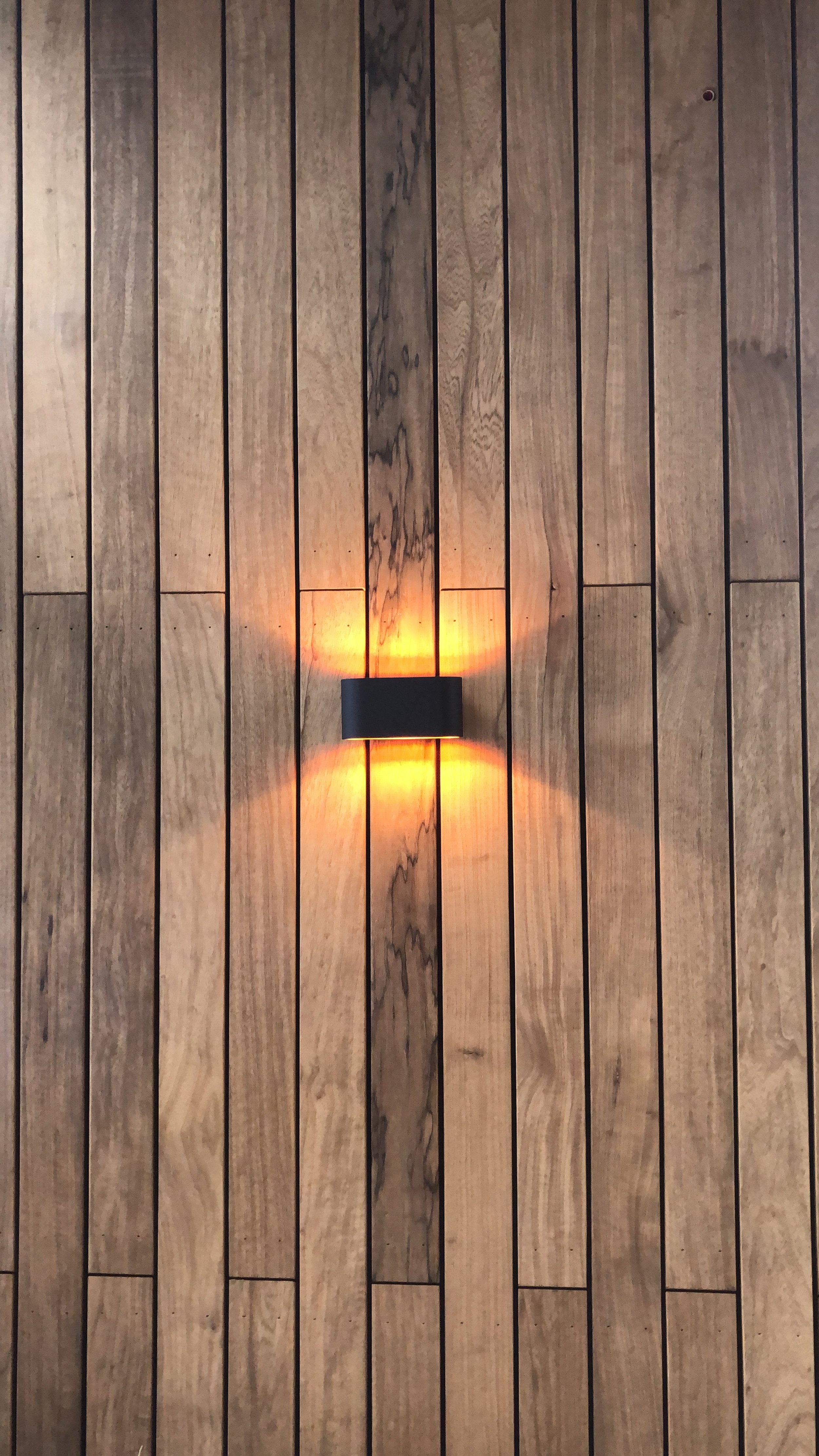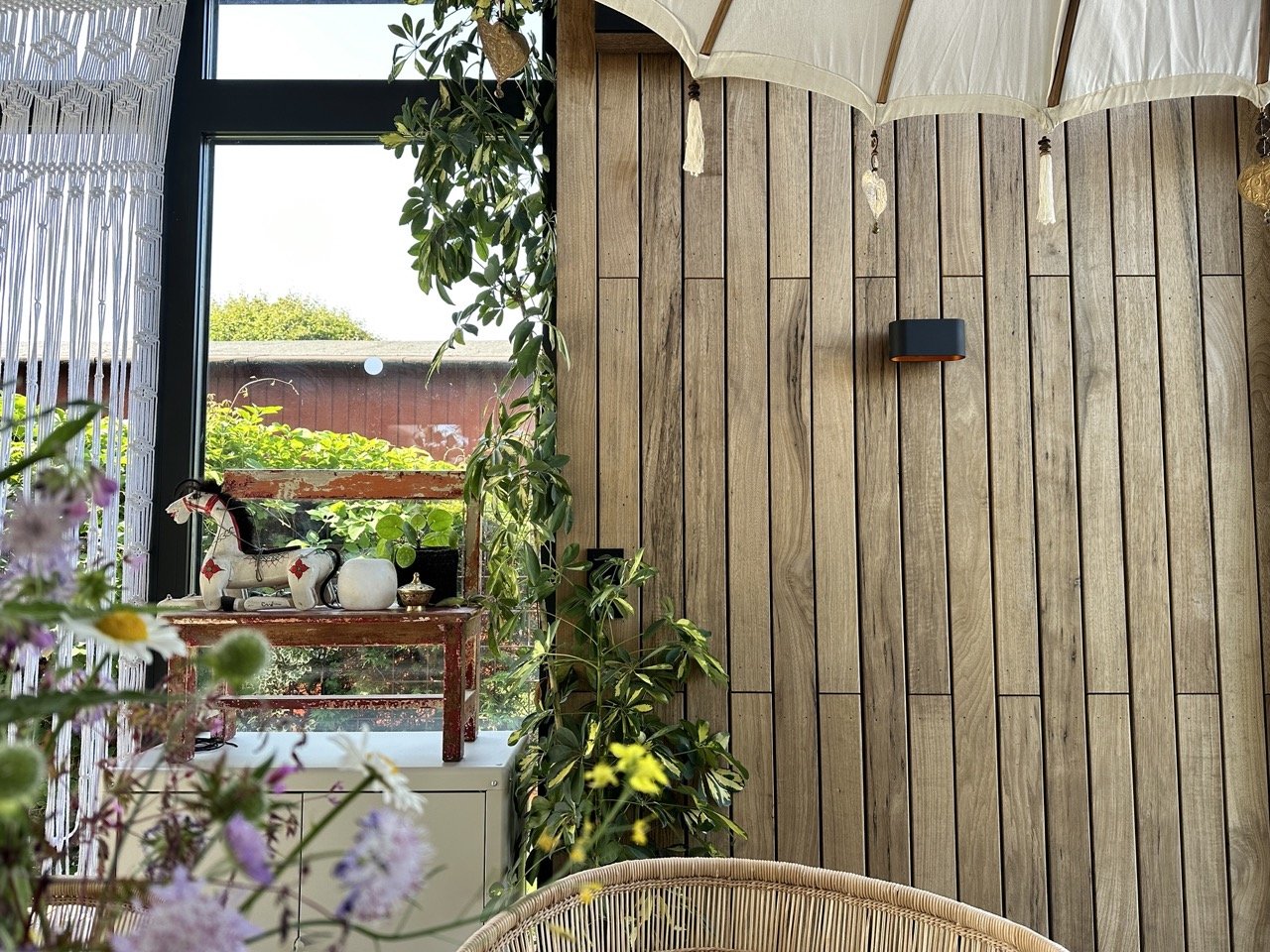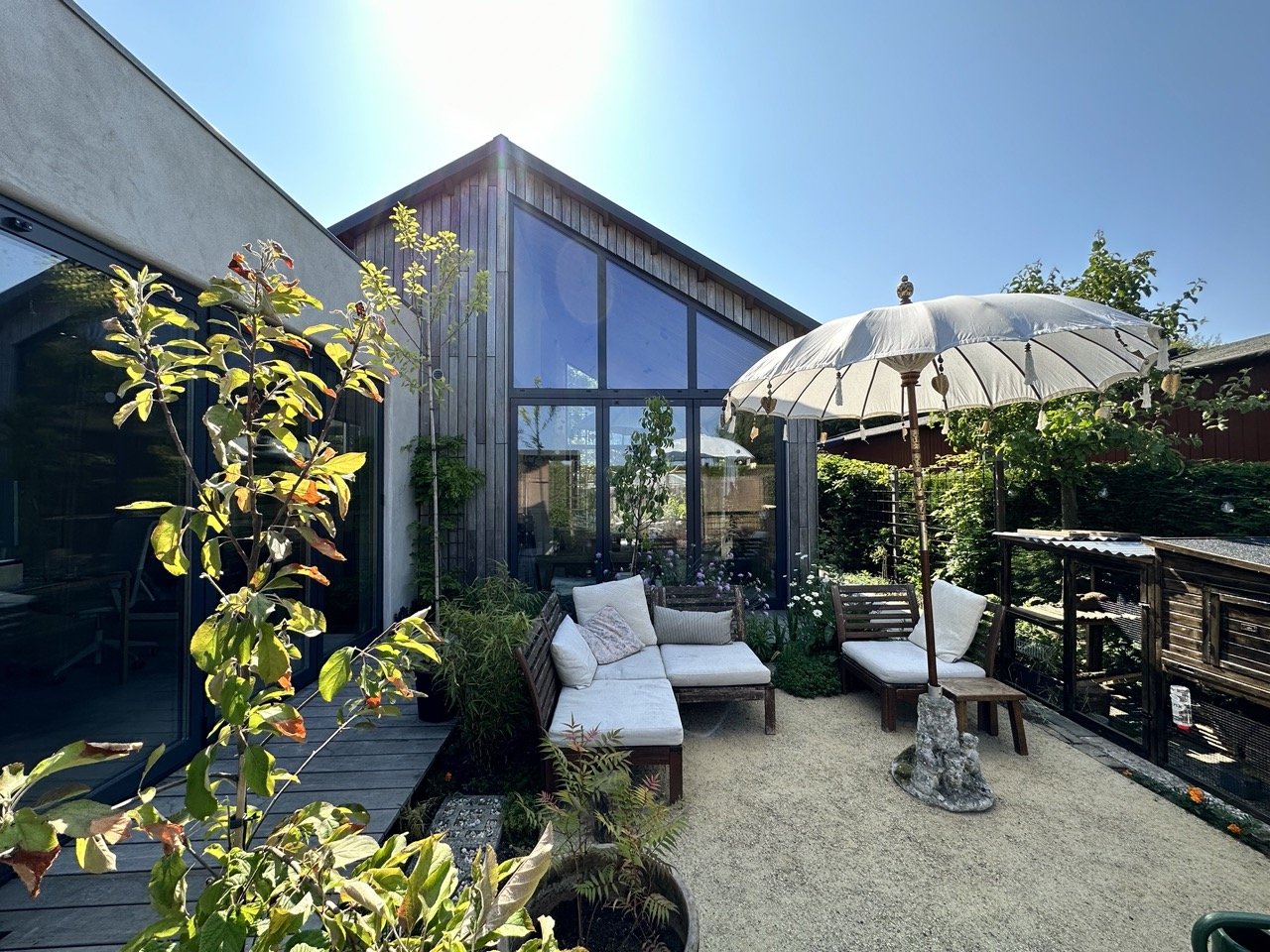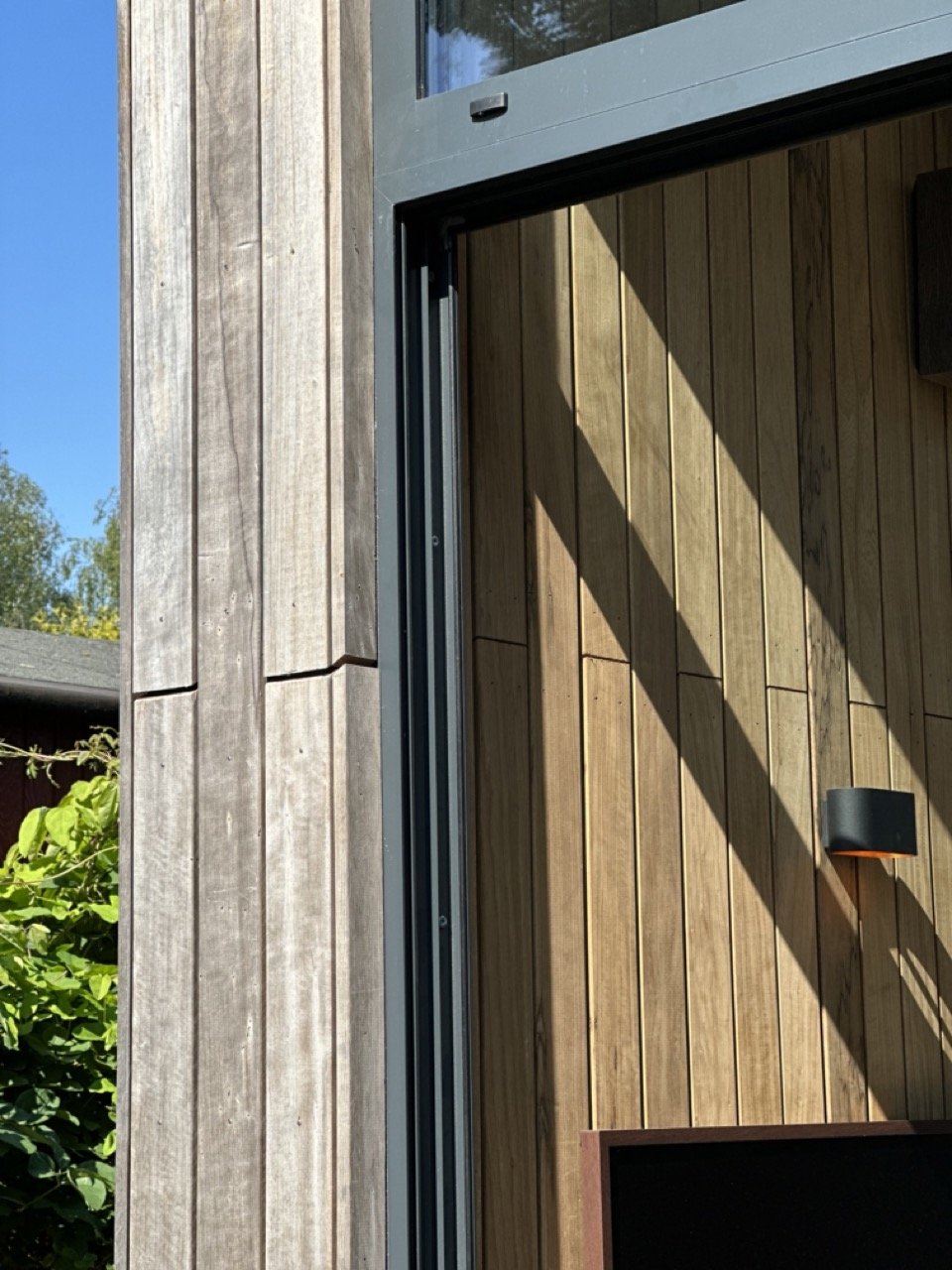Biophilia Inspired Living: Building with Platowood
Over the past few years, my partner and I embarked on an incredible journey of designing and building our dream home. One of the materials that played a crucial role in bringing our vision to life and creating a strong connection with nature is Platowood. In this blog post, I want to share our personal experience as homeowners, the therapeutic effect of Biofilia, and how Platowood helped us achieve an indoor/outdoor connection that truly enhances our living space.
The process of adding Platowood to our indoor wall and ceiling.
Why Platowood?
When it comes to building our home, it was essential for us to choose sustainable materials that align with our values. Platowood became the perfect solution for our wooden wall cladding idea, thanks to its remarkable properties and sustainable production process. By preventing deforestation and meeting the rising demand for wood products, Platowood offers a durable and aesthetically pleasing solution for building our home.
Background information about Biophilia; the innate human affinity for nature and natural environments, has long been recognized for its positive impact on our well-being. As homeowners, we understand the importance of incorporating elements of Biophilia into our living spaces to promote a sense of calm, connection, and harmony with the natural world. Biophilia is the therapeutic effect nature has on our well-being.
A Renewable Resource
Platowood utilizes fast-growing wood sourced from sustainably managed forests for its products. Unlike tropical hardwoods with extended growth periods and overseas transportation, the trees used by Platowood can be harvested after just 30 years, while still surpassing the usage lifespan of tropical hardwoods. By selectively harvesting fast-growing, less durable trees like Fraké, Platowood maintains forest biodiversity. The hydro-thermic modification process used by Platowood enhances the longevity and dimensional stability of the wood, all achieved through an ecological approach without the use of chemical additives.
Step 1: Hydro-Thermolysis
The wood is heated at a high temperature to brake down sugars that are susceptible to mould formation.
Step 2: Drying
The wood is then carefully and gradually dried to prevent any cracking.
Step 3: Curing
The wood is then ‘baked’ in an oven. This step creates new stable connections within the wood.
Promoting Sustainable Forest Management & CO2 reduction
At the heart of our decision to use Platowood for the wall cladding in our dream home lies a deep commitment to promoting sustainable forest management and maximizing CO2 sequestration. It's not just about creating a beautiful living space; it's about making a positive impact on the environment and nurturing a connection with nature that goes beyond the surface.
Platowood shares our vision of responsible and nature-oriented forest harvesting, ensuring the preservation of precious forests while constructing wooden homes. This resonated with us, as we believe in the importance of biodiversity, the well-being of forestry workers, and the rights of forest inhabitants. When developing its sustainable wall cladding, Platowood places great emphasis on these social and ecological aspects. We were impressed by their dedication to personally visiting sawmills to source environmentally friendly wood for their products, giving us the assurance that the wood comes from sustainably managed forests.
One of the remarkable advantages of sustainable forest management is the efficient CO2 sequestration capacity of these forests compared to natural forests. We liked the idea that the young, rapidly growing trees used by Platowood absorb more CO2 than mature trees, which eventually release the stored CO2 back into the atmosphere. By opting for sustainably managed forests, we contribute to the continuous absorption of CO2. Research has shown that each cubic meter of wood can store approximately 0.9 tons of CO2, a significant contribution to combating climate change. This stored CO2 remains sequestered throughout the lifespan of the tree, the wood product itself (such as our wall cladding), and even though future reuse and recycling. It's a profound and lasting impact we are proud to be a part of.
View from inside and outside wall cladding
We used Platowood Fraké
Creating an Indoor/Outdoor Connection
One of the aspects we love most about our home is the seamless indoor/outdoor connection. With Platowood as our wall cladding material both inside and outside the house, we've achieved a unique harmony between our living spaces and the natural surroundings. The natural warmth and texture of the wood, coupled with the large windows framing picturesque views, create a sense of tranquillity and calmness. We find ourselves inspired by the changing seasons, as the wood ages gracefully and becomes part of the natural environment.
Choosing Platowood as our wall cladding material has been a decision we will never regret. Not only did it enable us to create a beautiful and sustainable dream home, but it also allowed us to foster a stronger connection with nature through the principles of Biofilia. The Platowood sustainable properties, coupled with its ability to create an indoor/outdoor connection, have transformed our living space into a sanctuary that we cherish every day. If you're considering building or renovating your home, I highly recommend exploring Platowood as a sustainable and aesthetically pleasing option that brings you closer to nature.
Order your own Platowood samples today and discover how you can create a sustainable and nature-inspired living space that truly reflects your values and enhances your well-being.












